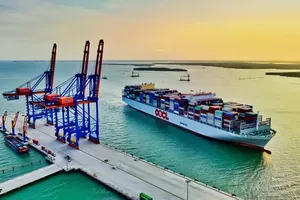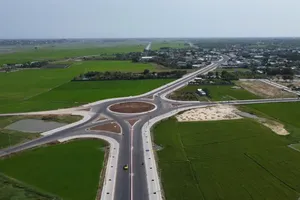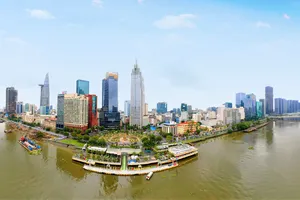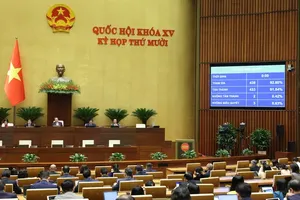 A large number of vehicles are stuck on National Highway No.1A in HCMC’s Binh Chanh District during peak hours. (Photo: VNA)
A large number of vehicles are stuck on National Highway No.1A in HCMC’s Binh Chanh District during peak hours. (Photo: VNA)
It has submitted a proposal to the municipal People’s Committee to implement it by 2025. It expects to spend nearly VND500 billion (US$21.75 million) on it.
Innovative Technology Development Corporation has offered to execute it as a PPP (public-private partnership) project. It plans to set up 36 tollbooths on streets leading to the city center with an operating center linked with all of them.
Most will be in districts 1 and 3 on streets leading to the downtown area. Some will also be in traffic-clogged streets in Tan Binh District, such as Truong Son and Cong Hoa.
The tollgates will automatically collect fees from on board units installed in cars. Tolls will not be collected from public buses and vehicles like ambulances, fire engines and police vehicles. The toll will only be applicable during peak hours (6 a.m. to 9 a.m. and 3 p.m. to 9 p.m.).
The toll will be VND40,000-VND70,000 ($1.7-$3), depending on the vehicle, and VND20,000 for taxis registered to ply in the city.
According to ITD, 110,000-150,000 vehicles enter the downtown area every day. Slapping a fee for such entry is expected to reduce the number by 30-40 percent, easing traffic jams.
The project is part of the city’s master plan to promote public transport. Private cars meet only 10 percent of transport demand but occupy 50 percent of the street surface.
But tolls alone cannot curb traffic jams, and they must be combined with other measures such as urban and infrastructure planning, and development of mass transport such as the metro and monorail, experts said.
At the end of last year there were 8.4 million vehicles registered in the city, including 819,000 cars. An average of 79 cars and 309 motorbikes are registered every day.
The number of cars and motorbikes increased by 3.5 percent and 2 percent last year, a year ravaged by Covid-19, compared to 2020.
Innovative Technology Development Corporation has offered to execute it as a PPP (public-private partnership) project. It plans to set up 36 tollbooths on streets leading to the city center with an operating center linked with all of them.
Most will be in districts 1 and 3 on streets leading to the downtown area. Some will also be in traffic-clogged streets in Tan Binh District, such as Truong Son and Cong Hoa.
The tollgates will automatically collect fees from on board units installed in cars. Tolls will not be collected from public buses and vehicles like ambulances, fire engines and police vehicles. The toll will only be applicable during peak hours (6 a.m. to 9 a.m. and 3 p.m. to 9 p.m.).
The toll will be VND40,000-VND70,000 ($1.7-$3), depending on the vehicle, and VND20,000 for taxis registered to ply in the city.
According to ITD, 110,000-150,000 vehicles enter the downtown area every day. Slapping a fee for such entry is expected to reduce the number by 30-40 percent, easing traffic jams.
The project is part of the city’s master plan to promote public transport. Private cars meet only 10 percent of transport demand but occupy 50 percent of the street surface.
But tolls alone cannot curb traffic jams, and they must be combined with other measures such as urban and infrastructure planning, and development of mass transport such as the metro and monorail, experts said.
At the end of last year there were 8.4 million vehicles registered in the city, including 819,000 cars. An average of 79 cars and 309 motorbikes are registered every day.
The number of cars and motorbikes increased by 3.5 percent and 2 percent last year, a year ravaged by Covid-19, compared to 2020.



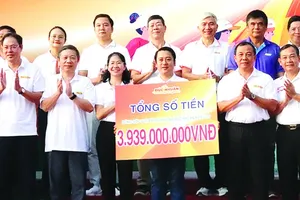
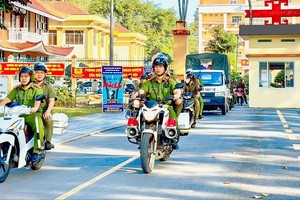
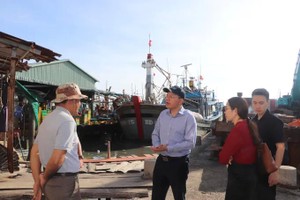





)
